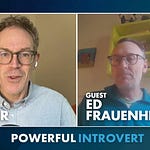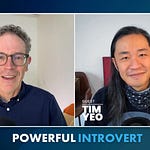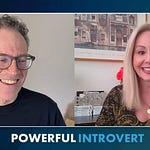Ever wonder what goes into creating an amazing place to work? Does such a place even exist?
Chris Dyer has built one—and in this episode, he shares exactly how he did it.
From rethinking meetings to designing a culture that supports introverts, remote teams, and top performers, this conversation is packed with entertaining stories, practical tips, and some profound leadership advice.
Chris Dyer is a recognized expert on company culture, leadership, and remote work. As the former CEO of PeopleG2, he led thousands of employees while earning consistent recognition as one of the best places to work. Under his leadership, the company was also named to Inc. Magazine’s list of fastest-growing companies five times.
Today, Chris is a sought-after consultant and keynote speaker, ranked the #1 Leadership Speaker on Culture by Inc. Magazine. He helps organizations build high-performing, people-first cultures—especially in hybrid and remote environments.
What you’ll learn:
Why culture must be built intentionally—it can’t be copied or willed into existence.
The seven essential pillars of a great culture: transparency, positive leadership, learning from mistakes, celebrating uniqueness, listening, recognition, and intentionality.
How weak cultures drain productivity, profits, and performance, and how strong ones amplify them.
How to create clarity and reduce anxiety by defining behavioral norms and “how we operate here.”
Why the most effective cultures set clear expectations for behavior—and how this encourages toxic people to opt out on their own.
The powerful impact of designing better meetings, including Chris’ unique formats, including: Cockroach, Ostrich, and Tsunami planning meetings.
How these meeting types empower employees, improve psychological safety, and accelerate learning—especially in hybrid and remote settings.
How meeting structures like “How are you showing up?” and “How are you leaving?” foster team bonding and emotional support.
Why introverts thrive in well-structured, asynchronous environments with psychological safety.
Why real trust in leadership means being flexible on the small stuff—and unwavering on the big stuff.
How leaders can transition from solving problems for their team to empowering them to solve problems on their own.
Some takeaways:
Great culture doesn’t happen by accident—it starts with a deeply intentional vision from leadership.
Culture isn’t just values on the wall; it’s the way people behave when no one’s watching.
Transparent decision-making and clear boundaries eliminate manipulation, favoritism, and fear.
Toxic people often self-select out of environments with clarity and consistency—they can’t operate in the light.
Unique meeting types (like Cockroach and Ostrich meetings) give teams tools to quickly solve problems or learn new skills without unnecessary bureaucracy.
Don’t let employees drown in email—embrace async tools like Slack and teach healthy communication norms.
One of the simplest but most powerful questions: “How are you showing up today?”
Leaders must show up when it matters—employees remember the moments you offer compassion, not control.
Give your team autonomy. They’ll grow more from a small mistake they own than a perfect solution you hand them.
Your job as a leader is to handle the hard stuff. Let your team handle the rest.
Where to find Chris Dyer:
LinkedIn: https://www.linkedin.com/in/chrisdyer
Website: https://www.chrisdyer.com
TikTok & Instagram: @chrisdyerco
In this episode, we cover:
(00:00) How Chris came to wear such iconic glasses
(02:45) Why culture must be intentional
(05:20) The impact of great vs. poor cultures
(06:40) The seven pillars of great culture
(08:15) What “celebrating uniqueness” really means
(10:05) How to design a company’s operating environment
(13:00) How clear norms cause toxic people to opt out
(15:30) Birthday parties vs. barbecues: how defined norms reduce anxiety
(17:20) The problem with bloated meetings
(18:45) The Cockroach Meeting—empower employees to solve small problems fast
(22:30) The Ostrich Meeting—help employees learn new skills quickly
(25:20) How Chris enforced real time off—and deleted 1,000 emails in one click
(27:00) The Tiger Team Meeting—for high-stakes, high-intensity collaboration
(31:00) Moving all internal communication to Slack
(35:00) Public learning: how visibility creates shared knowledge
(36:00) The Tsunami Planning Meeting—drive innovation and equity in meetings
(38:45) Coaching over-talkers and drawing out quiet contributors
(43:00) How to run a “bonding moment”—“How are you showing up?”
(46:00) The leader always goes last—and must act if a team member is struggling
(49:00) Be rigid on big things, flexible on small ones
(51:00) Give your team ownership. Let them fail.
(53:00) The cultural transformation that saved Chris’s company during COVID
(54:30) Where to follow Chris and learn more










